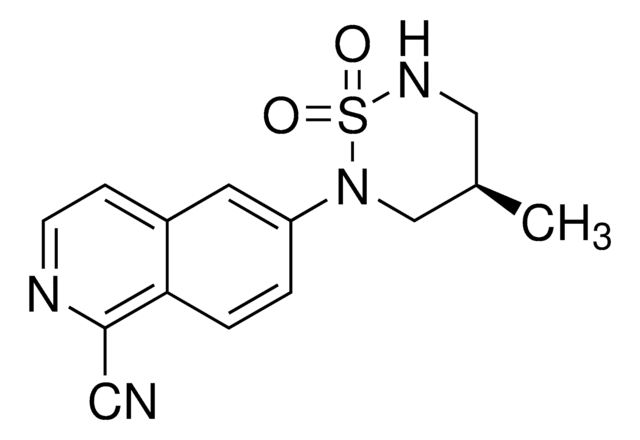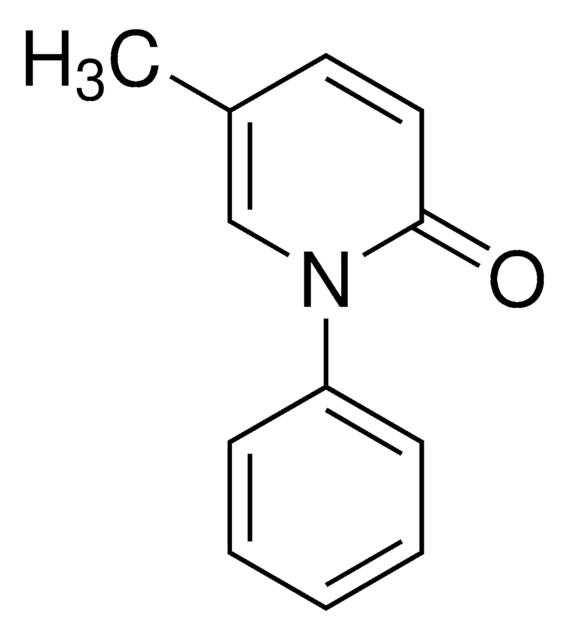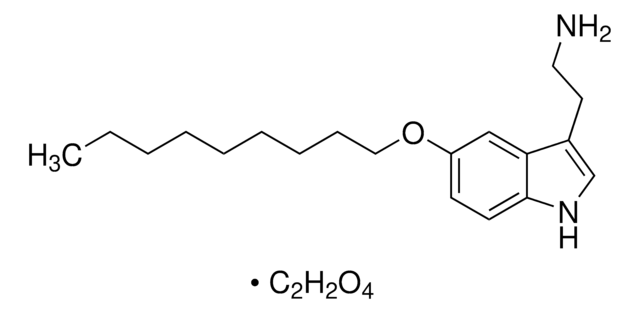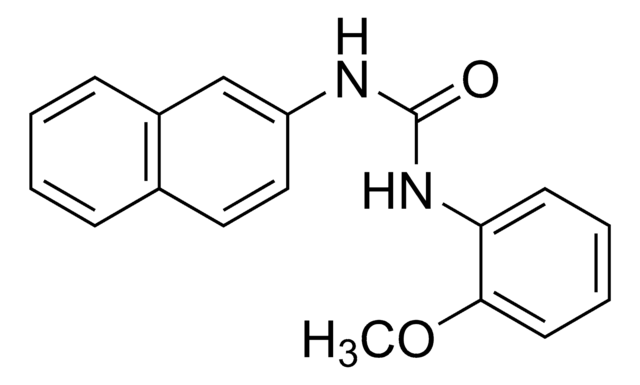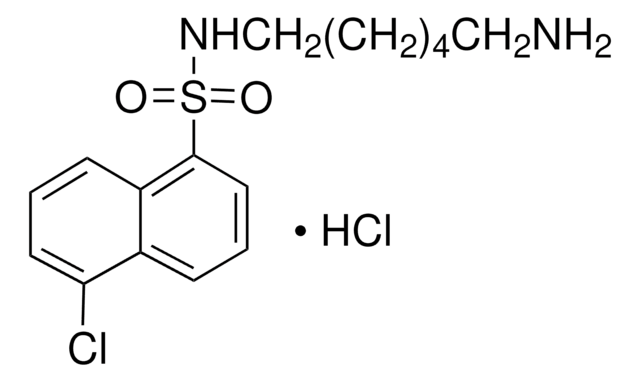SML0717
W-13
≥98% (HPLC)
Sinônimo(s):
N-(4-Aminobutyl)-5-chloro-2-naphthalenesulfonamide hydrochloride, W13
About This Item
Produtos recomendados
Nível de qualidade
Ensaio
≥98% (HPLC)
Formulário
powder
cor
white to beige
solubilidade
H2O: 20 mg/mL, clear
temperatura de armazenamento
room temp
cadeia de caracteres SMILES
Cl.NCCCCNS(=O)(=O)c1cccc2c(Cl)cccc12
InChI
1S/C14H17ClN2O2S.ClH/c15-13-7-3-6-12-11(13)5-4-8-14(12)20(18,19)17-10-2-1-9-16;/h3-8,17H,1-2,9-10,16H2;1H
chave InChI
IKMXJMNRHREPOD-UHFFFAOYSA-N
Procurando produtos similares? Visita Guia de comparação de produtos
Ações bioquímicas/fisiológicas
Características e benefícios
Código de classe de armazenamento
11 - Combustible Solids
Classe de risco de água (WGK)
WGK 3
Ponto de fulgor (°F)
Not applicable
Ponto de fulgor (°C)
Not applicable
Escolha uma das versões mais recentes:
Certificados de análise (COA)
Não está vendo a versão correta?
Se precisar de uma versão específica, você pode procurar um certificado específico pelo número do lote ou da remessa.
Já possui este produto?
Encontre a documentação dos produtos que você adquiriu recentemente na biblioteca de documentos.
Artigos
Cyclic nucleotide phosphodiesterases (PDEs) catalyze the hydrolysis of cAMP and/or cGMP. There are 11 different mammalian PDE families.
Conteúdo relacionado
Cyclic nucleotides, including cyclic AMP (cAMP), cyclic GMP (cGMP) and cyclic ADP-ribose, have been extensively studied as second messengers of intracellular events initiated by activation of GPCRs. cAMP modifies cell function in all eukaryotic cells, principally through the activation of cAMP-dependent protein kinase (PKA), but also through cAMP-gated ion channels and guanine nucleotide exchange factors directly activated by cAMP.
Nossa equipe de cientistas tem experiência em todas as áreas de pesquisa, incluindo Life Sciences, ciência de materiais, síntese química, cromatografia, química analítica e muitas outras.
Entre em contato com a assistência técnica
